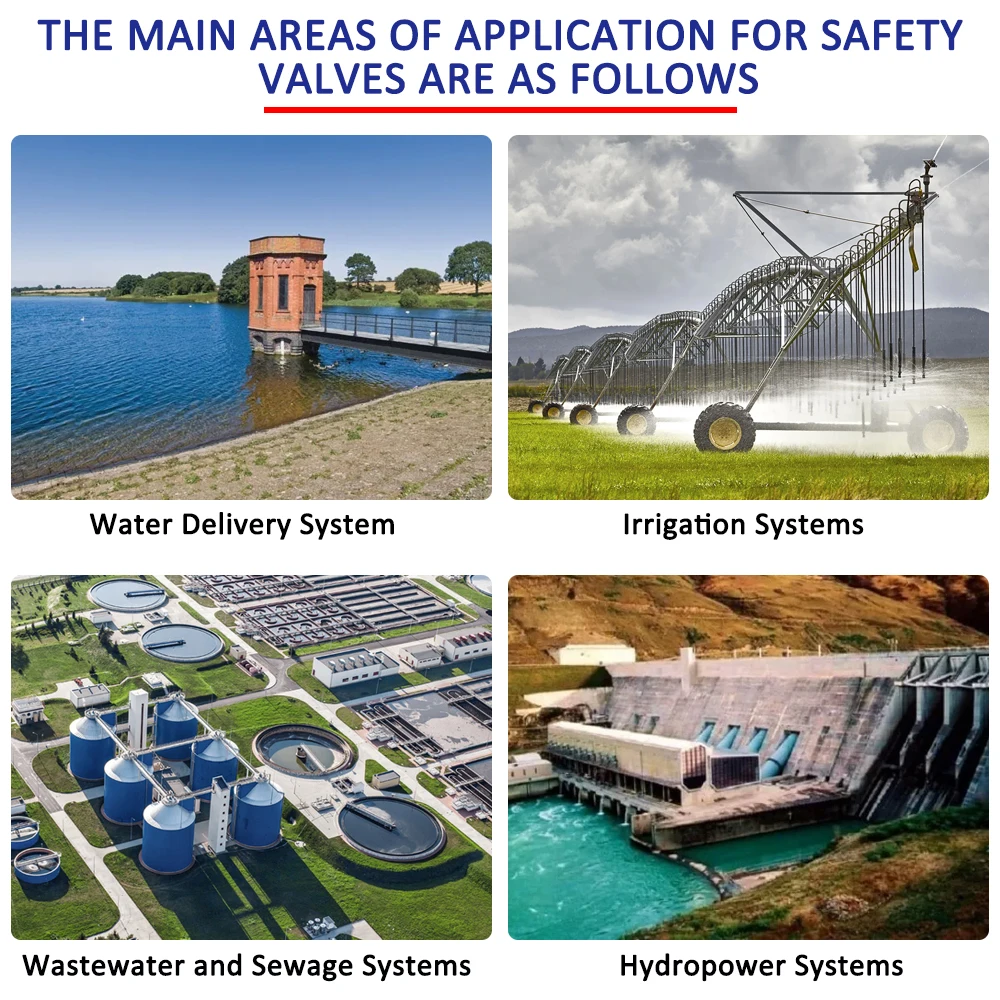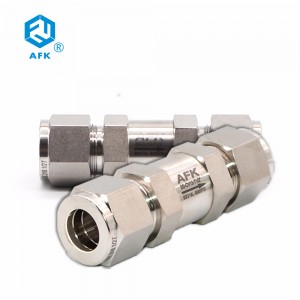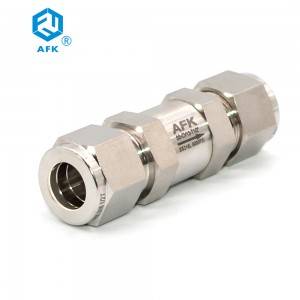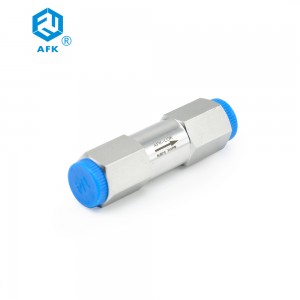High Pressure Air Stainless Steel Relief Valve Proportional Relief Valve 6000psi

|
MATERIALS OF CONSTRUCTION
|
|||
|
Item No.
|
Components
|
Qty
|
Valve Body Materia
|
|
1
|
Cap Plug
|
1
|
Polypropylene
|
|
2
|
Adjustment Cap
|
1
|
St.St.316
|
|
3
|
Cap Lable
|
1
|
Polyester
|
|
4
|
Locking Nut
|
1
|
St.St.316
|
|
5
|
Upper Spring Button
|
1
|
St.St.316
|
|
6
|
Spring
|
1
|
St.St.302
|
|
7
|
Lower Spring Button
|
1
|
St.St.316
|
|
8
|
Bonnet
|
1
|
St.St.316
|
|
9
|
O-ring
|
1
|
FluorocarOn EKM
|
|
10
|
O-ring
|
1
|
Fluorocarbon FKM
|
|
11
|
Retaining Ring
|
1
|
PH15-7 Mo
|
|
12
|
Stem
|
1
|
St.St.316
|
|
13
|
Bonded Poppet
|
1
|
St.St.316StSt. 316 Bonded with Fluorocarbon FKM
|
|
14
|
Insert
|
1
|
St.St.316
|
|
15
|
Packing
|
1
|
PTFE
|
|
16
|
Ring
|
1
|
St.St.316
|
|
17
|
Body
|
1
|
St.St.316
|
The main purpose of air release valves is to eliminate trapped air or gas and promote efficient and reliable operation of fluid systems in various industries.
The fields of application are:
Water Distribution Systems,Irrigation System,Wastewater and Sewage Systems,Hydropower Systems,Fire Protection Systems,HVAC Systems,Chemical Processing ect.
Q. Are you manufacturer?
A. Yes, we are manufacturer.
Q. What is lead time?
A. 3-5days. 7-10 days for 100pcs
Q. How do I order?
A. You can order it from Alibaba directly or send us a inquiry. We will reply you within 24 hours
A. You can order it from Alibaba directly or send us a inquiry. We will reply you within 24 hours
Q: What is a safety valve?
A: A safety valve is a device used to protect a pressure vessel or system from excessive pressure. It will open when the pressure exceeds a set value, releasing the excess pressure to prevent rupture or damage to the vessel or system.
Q: Why are safety valves important?
A: Safety valves are critical components that protect the safe operation of pressure vessels and systems. They ensure that pressures do not exceed set ranges and prevent excessive pressures that could lead to accidents, explosions or leaks.
Q: What is the working principle of a safety valve?
A: Safety valves work by adjusting the balance between spring force and medium pressure. When the pressure exceeds the set value, the spring is compressed, causing the valve to open and release the excess pressure. Once the pressure returns to within the set range, the valve closes and keeps the pressure stable.
A: Safety valves work by adjusting the balance between spring force and medium pressure. When the pressure exceeds the set value, the spring is compressed, causing the valve to open and release the excess pressure. Once the pressure returns to within the set range, the valve closes and keeps the pressure stable.
Q: How do I select the proper type and size of safety valve?
A: Selection of the proper type and size of safety valve depends on the specific requirements of the application, including vessel or system operating pressure, media type, flow requirements and environmental conditions.
A: Selection of the proper type and size of safety valve depends on the specific requirements of the application, including vessel or system operating pressure, media type, flow requirements and environmental conditions.
Q: Do safety valves require maintenance?
A: Yes, safety valves require regular maintenance and inspection to ensure proper operation and reliability. Maintenance includes cleaning, calibrating, checking seals and valve components for wear, and documenting maintenance records. It is recommended to follow the maintenance guidelines provided by the manufacturer.
A: Yes, safety valves require regular maintenance and inspection to ensure proper operation and reliability. Maintenance includes cleaning, calibrating, checking seals and valve components for wear, and documenting maintenance records. It is recommended to follow the maintenance guidelines provided by the manufacturer.
Q: How are safety valves calibrated and tested?
A: Safety valves should be calibrated and tested periodically to ensure that they respond accurately over their normal operating pressure range. Testing typically involves pressure testing the valve with calibration equipment and checking its opening and closing accuracy. Calibration and testing should be carried out by an experienced professional or an organization that meets the relevant standards.
Q: How can I tell if a safety valve needs to be replaced?
A: Safety valves may need to be replaced after service life, frequent operation, or experiencing excessive pressure conditions. Replacement should also be considered if the safety valve cannot be calibrated, tested or maintained to restore its proper function. It is recommended that the manufacturer’s recommendations and relevant standards be followed.
Write your message here and send it to us













